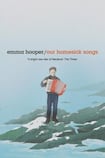
In 1992 I was fortunate enough to be appointed the first “come from away” writer-in-residence at Memorial University in Newfoundland, a place that both is, and is not, a part of Canada. The newest province of them all, Newfoundland, didn’t join what Newfoundlanders refer to as “the mainlanders” of Canada until a very contentious referendum was barely won in 1949. Before that, and for most of the period after Western contact, Newfoundland remained a barely noticed British colony, almost completely reliant on its marvellous proximity to the seemingly endless resources of the Grand Banks fishery.
Among the many facts the rest of the world – even the rest of Canada – fail to fully grasp about Newfoundland is just how large and far away it is. To give you some idea, a flight from St John’s, the capital of Newfoundland, to Halifax, the capital of Nova Scotia on the east coast of mainland Canada, takes two hours. This distance from the rest of the known world, combined with the ocean and outport culture embedded in the fishery, is partly responsible for the distinct culture of Newfoundland, which is focused on language, music, memory, folklore, vernacular architecture, nautical songs, and the telling of tall tales. In the past few decades, moreover, with the emergence of voices such as Wayne Johnston, Lisa Moore, Michael Crummey and others, Newfoundland is being celebrated as the home of some of the finest literature in Canada.
All of this in conjunction with a wild, vast and scarcely populated natural world, and proximity to seals, whales and icebergs (some with polar bears as passengers) in the surrounding ocean, makes for one of the most magical places on earth. But like all things magical, Newfoundland was vulnerable to intrusion from the harder outside world. Huge European trawlers with drag nets did such damage to fish stocks in the waters surrounding the Grand Banks that, when I arrived in 1992, a cod moratorium had been just put in place in Newfoundland, and the fishery that had supported and defined the people and their culture was being shut down.
Children’s book diction
Musician and author Emma Hooper, whose imaginative and eccentric Etta and Otto and Russell and James was warmly received by critics when it was published in 2014, has turned her attention to the wonderful and terrible story of Newfoundland. With an odd melding of children's book diction, and performance piece sophistication, she has recreated the demise of the fishery on the one hand, and explored the persistence of folk memory on the other. Sometimes the children's book diction grates, as when phrases such as "deal of the day" or "no big thing" are intentionally repeated several times on one page. But on the whole her simplicity of delivery works well, and allows her to avoid finger-pointing and assignment of blame, something that is very difficult to achieve when dealing with the subject of the demise of the cod fishery.
Instead, her 10-year-old protagonist, Finn Connor who lives in the outport of Big Running, views the disappearance of the fish, the fishing boats, and the people of his community – including his mother and father who must leave Newfoundland in tandem fashion to find work – as a cosmic event, one that might be able to be fixed by art, magic and music.
Singing mermaids
The music manifests itself in several ways. Mermaids persistently sing offshore, men sing on board fishing vessels, Finn’s sister Cora plays the fiddle, and Finn himself visits an accordion teacher in Little Running across the bay from Big Running. Art is also made in a most natural and integrated manner. Finn’s mother, Martha, not only hears mermaids, but compulsively knots nets in her youth – at first to keep the sorrow of her mother’s death at bay – but eventually making nets of such quality, the fishermen pay her good money for them. Cora transforms the rooms of abandoned houses into the exotic, tropical lands she has read about in travel magazines. Finn makes a kind of installation piece in the water to attempt to coax the fish back from wherever they have gone. He collects battery driven lights from all the abandoned houses in his empty outport, and fastens them to nets, floats, sinkers, flags and traps. His accordion teacher sees the water-work construction from her window in Little Running across the bay.
And so does the reader with their mind’s eye. It is one of the strengths of its book that its author has constructed such an authentic sense of place from such a distant shore. In Hooper’s hands Newfoundland has become a kind of Narnia, or Never-Never Land, a place that we believe in.
Jane Urquhart is the author of eight novels and is the 2017-2018 Craig Dobbin Chair of Canadian Studies at UCD










